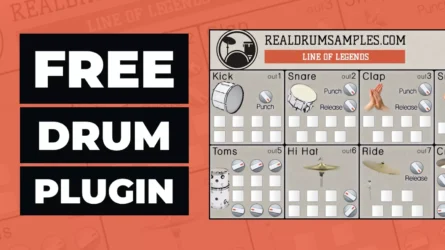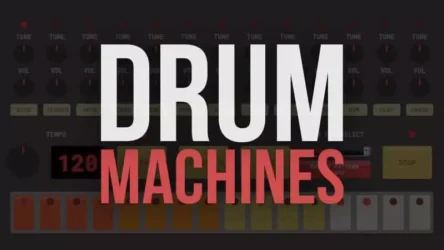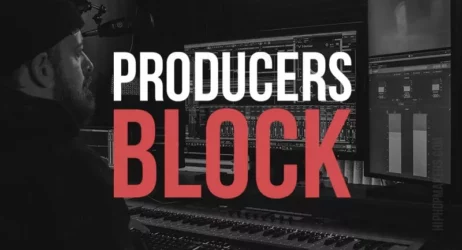Here is a simple guide explaining what is an EP, what it is used for, and other common questions.
- What Is An EP
- Why Do Artist Create EP Albums
- What Is an EP Used For
- Examples of EP Albums
- How Many Songs Are in An EP
- Why Release Shorter Albums
- Maximum & Minimum Track Lengths
- Album vs EP
What Is An EP?
An EP, short for Extended Play, is a shorter music album with 2 to 9 songs and is usually under 30 minutes in length. EPs tend to be more concise mini albums with a much smaller price tag.
The term “EP” has been used in various ways in the music industry, but today we use it most often when referring to albums with fewer than 10 tracks.
In some cases, an EP may contain only three or four songs, while others might have seven or even nine.
Some EPs are made specifically for radio play; these tend to be shorter than typical EPs, typically lasting no longer than two or three minutes per track.
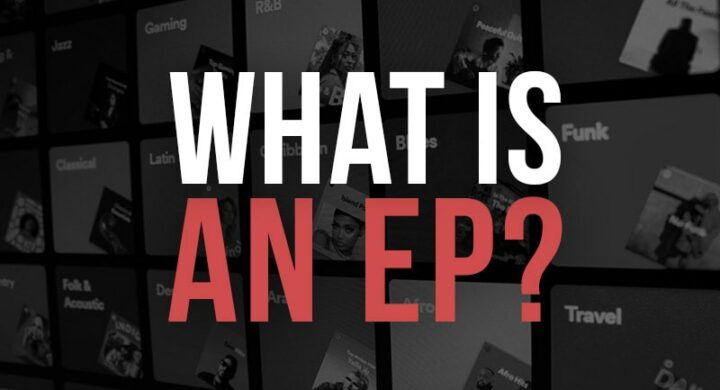
In this case, the EP will likely include at least one single, though not always.
While there is no official definition of what constitutes an EP, many people consider anything under ten songs to fall into this category.
The first use of “EP” came from vinyl records where EPs could hold up to eight tracks. This meant that artists would have more room to fill out their record collections.
Why Do Artists Create EP Albums?
There are two primary reasons that people release EPs: firstly, they want to get their music out faster.
If you’ve got a band and you don’t really know where your sound fits yet, releasing an EP gives you a chance to test the waters before committing yourself to making a full-length studio album.
Secondly, EPs give you a way to try different styles without having to commit to a whole project.
You could put together a collection of songs that all fit within the same genre, or you could mix up genres by putting together a bunch of songs that aren’t related musically.
You can do whatever you like! The point is just to experiment and see if something sticks. If it does, then great, keep going.
If it doesn’t, you still learn a lot about how to write good songs.
What Is an EP Used For?
An extended play can be used as a way to promote new material from artists who don’t have enough time to release their entire body of work at once.
It’s also useful when you want to give your fans something extra without having to spend too much money on it.
If you’re looking to get more exposure for yourself, then creating an EP might help you reach people who wouldn’t normally listen to what you do.
You could also choose to make an EP if you want to try out different styles of music before releasing them all together on a larger project.
You could put out several smaller projects instead of waiting until you’ve finished everything else first.
This would allow you to test out different ideas and see how they sound before committing to making a full album.
Examples of EP Albums
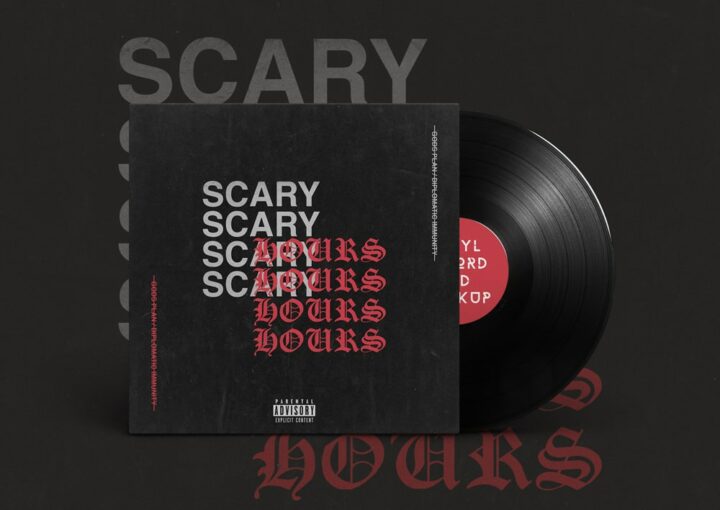
Here are a couple of examples of music artists who have released EP albums, to get an idea of the number of songs they included in their EP albums.
- Drake
- Scary Hours ( 2 Songs ) / Scary Hours 2 ( 3 Songs )
- The Best in the World Pack ( 2 Songs )
- So Far Gone ( 7 Songs )
- Meek Mill
- 4/4 ( 4 Songs )
- Legends of the Summer (EP) ( 4 Songs )
- Megan Thee Stallion. – Suga (EP) ( 9 Songs )
- Lil Nas X – 7 ( 8 Songs )
- Bad Meets Evil – Hell: The Sequel ( 9 Songs )
- Blu and Nottz – Gods in the Spirit ( 6 Songs )
- Adele – iTunes Festival: London 2011 ( 6 songs )
- Bruno Mars – The Grenade Sessions – EP ( 5 songs )
- Bruno Mars – It’s Better If You Don’t Understand ( 4 songs )
- Linkin Park – Hybrid Theory (EP) ( 6 songs )
How Many Songs Are in An EP?
There are no hard rules about this but most EPs tend to contain around 3 to 9 songs.
When choosing which songs to include on your EP, try not to go over 9 songs unless they’re really good ones. You don’t need to worry about having too little either though; just remember that less is often better.
If you decide to make your own EP, there are plenty of ways to choose which songs to put on it.
Some popular methods include picking out the best songs from each of your previous albums, selecting songs based on how similar they sound to each other, or simply making sure every track has its own unique quality.
So an EP can have anywhere from 3 to 9 tracks. It depends entirely upon how they’re arranged. But generally speaking, if there are fewer than 9 tracks then it’s considered an EP, otherwise, it’s not.
Why Release Shorter Albums?
There are several reasons why musicians choose to make shorter releases instead of full-fledged studio albums.
1) Keep Costs Down – A lot of bands don’t like spending money on expensive studios. So they can save money by releasing smaller projects.
2) Release Something New Quickly – It can be easier to release smaller projects instead of creating full-length albums.
3) Give Fans a Taste of Things to Come – Sometimes, artists decide to release a song or two ahead of schedule so they can gauge fan reaction. Or maybe they want to see which direction their sound takes after hearing certain parts of it.
4) Experiment – Maybe you’re trying out different sounds or styles to find out what works best for you or your band. By experimenting with different approaches, you can figure out exactly what kind of artist you want to become.
5) Create Hype – Some music artists prefer to release singles early so they can build anticipation for upcoming music projects. Others do it simply because they love making catchy tunes! Building hype can help get more new listeners and help get your music heard.
6) Promotion – It’s best to work on releasing new music projects to stay relevant in the mind of fans. It’s best to release digital music on all streaming platforms including Apple Music, Tidal, Spotify ( Playlists ), YouTube, etc.
Those are just a couple of reasons why releasing an EP is beneficial.
What Are The Maximum And Minimum Track Lengths?
There are no rules when it comes to track lengths but there are some guidelines. Generally speaking, most musicians stick to around 3 minutes per song. If you’re looking to release an EP then you’ll need to keep these limits in mind.
Album vs EP
An album is an artistic work, usually recorded by one or more artists and released in its entirety on one disc. An EP is typically shorter than an LP with fewer songs and may be released as part of a larger project such as a compilation CD or box set.
The term “EP” can also refer to any number of short releases from different bands. In some cases, EPs are considered singles while others are not.
Summary of EP Albums
To summarize our journey through the exciting world of music releases, it’s crucial to understand the key role of both EPs and LPs. An EP, or Extended Play record, often acts as a mini album, providing a stage for artists to showcase their musical style with a few songs.
Many artists, especially indie artists, use EPs as stepping stones in their music career, often releasing music in this format before their debut album.
Take, for instance, a band that has an upcoming album. They might release an EP first, perhaps to test the waters or give fans a taste of what’s to come. It might contain the title track from the upcoming album, plus a few more songs.
This could also include bonus tracks that may not fit the full-length album’s style or theme. Digital downloads and vinyl EPs are common formats for such releases.
On the other hand, an LP, or Long Play, is a traditional album. It includes more songs, essentially an album’s worth, providing a broader range of the artist’s capabilities.
New albums are often released as vinyl LPs due to their superior sound quality. They can also include the first track, a release title that sets the tone for the rest of the album.
Vinyl records, both LPs and EPs, have gained popularity, with record labels and artists alike finding value in releasing music in this format.
While the difference between EP and LP can vary depending on the artist or the label, the EP typically contains fewer tracks compared to an LP.
Whether it’s a debut album, a first EP, or a release in anticipation of a new full album, both EPs and LPs are essential tools for artists to express their musical vision.
From popular artists to indie artists, these formats allow for flexibility and creativity in music releases.
So, next time you see new songs or albums released, remember that the number of tracks, the type of release (EP or LP), and even the format (vinyl record or digital download) are all carefully considered aspects that contribute to the unique journey of each artist’s music career.
I hope you found this info on what is an EP album helpful.
Related: What Is An LP in Music?

